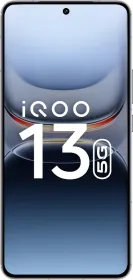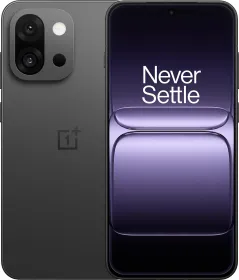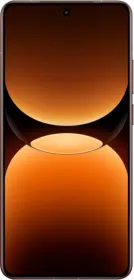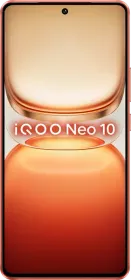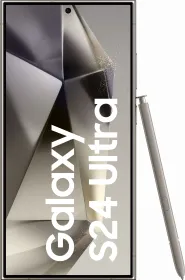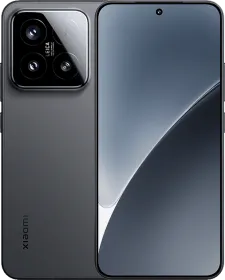The ₹50,000 to ₹60,000 segment in India is heating up lately (no pun intended) and the majority of the credit goes to two smartphones—the iQOO 13 and the realme GT 7 Pro. The realme GT 7 Pro, as you might already know, is India’s first Snapdragon 8 Elite smartphone. On the other hand, the iQOO 13 is the most affordable Snapdragon 8 Elite smartphone.
But let’s be real—no one really cares whether a smartphone was the first or the last to launch when making a buying decision. What matters is how it performs in real life and how viable of an option it is for the average consumer.
That said, it’s quite interesting to see gaming smartphones still alive and well in 2024. These days, most flagship smartphones give you the same level of performance, along with a few extra perks—like much better cameras.
But… while these gaming phones most certainly don’t pack the greatest camera hardware or the algorithms, they do offer you great performance for cheap—or at least, that’s what they promise. So, to put this promise to test, I used both the iQOO 13 and the realme GT 7 Pro for a few weeks and I have some intriguing insights to share.
Here, I’ll be comparing the display, the performance, the battery, and whatever you have on your mind right now plus that you don’t have on your mind right now. Keep reading, and you’ll see what I mean.
iQOO 13 vs. realme GT 7 Pro: The Specs
Before we jump in, let’s quickly do away with the specs of both the iQOO 13 and the realme GT 7 Pro. To keep things simple for you (and for me), I’ve put together a table so you can compare everything at a glance:
| iQOO 13 | realme GT 7 Pro | |
| Display | 6.82-inch BOE Q10 OLED, 2,592 Hz PWM, 3168×1440, 510 PPI, 4500 Nits peak, 144 Hz refresh, Schott Xensation Alpha | 6.78-inch LTPO Samsung AMOLED, 120 Hz, 6500 Nits peak, 2780×1264, 450 PPI, Gorilla Glass 7i, Dolby Vision |
| SoC | Snapdragon 8 Elite (2x 4.32 GHz Oryon Phoenix L, 6x 3.53 GHz Oryon Phoenix M, Adreno 830, 3nm) + SuperComputing Chip Q2 | Snapdragon 8 Elite (2x 4.32 GHz Oryon Phoenix L, 6x 3.53 GHz Oryon Phoenix M, Adreno 830, 3nm) |
| RAM | 12/16 GB LPDDR5X Ultra | 12/16 GB LPDDR5X |
| Storage | 256/512 GB UFS 4.1 | 256/512 GB UFS 4.0 |
| Main Camera | 50 MP Sony IMX921, 1/1.56-inch, f/1.88, OIS, Laser AF, 8K24, 4K30/60 | 50 MP Sony IMX906, 1/1.56-inch, f/1.8, OIS, PDAF, 24mm, 8K30, 4K30/60 HDR |
| Ultra-wide Camera | 50 MP Samsung JN5, 1/2.76-inch, f/2.0, AF, 120°, 4K30/60 | 8 MP Sony IMX355, 1/4-inch, f/2.2, 16mm |
| Telephoto/Periscope | 50 MP Sony IMX816, 1/2.93-inch, f/1.85, 2x optical, 50mm | 50 MP Sony IMX882, 1/1.95-inch, f/2.65, OIS, 3x optical, 73mm, 4K30/60 HDR |
| Front Camera | 32 MP GalaxyCore GC32E1_PD2408, 1/3.15-inch, f/2.45, 28mm, 4K30/60 | 16 MP Sony IMX480, 1/3.1-inch, f/2.45, 24mm, 1080p30 |
| Speakers | Dual-stereo speakers, LDAC only | Stereo speakers with earpiece, LHDC/LDAC |
| Battery and Charging | 6,000 mAh, 120W Flash Charge, PD support | 5,800 mAh, 120W SUPERVOOC, PD |
| IP Rating | IP68/IP69 | IP69 (2m for 30 minutes) |
| Connectivity | 5G, Wi-Fi 7, Bluetooth 5.4, 360-degree NFC | 5G, Wi-Fi 7, Bluetooth 5.4, NFC |
| Biometrics | Under-display ultrasonic fingerprint, 2D face unlock | Under-display ultrasonic fingerprint, 2D face unlock |
| Weight | 213g (Legend), 207g (Nardo Grey) | 223g |
| Build | Glass back, metal frame | Glass back with Panda glass protection, metal frame |
| Additional Features | Monster Halo Light | – |
iQOO 13 vs. realme GT 7 Pro: Design
The iQOO 13 and realme GT 7 Pro might look similar on paper, but the design differences are noticeable once you hold them. The iQOO 13 feels slightly lighter at 213 grams, making it more comfortable for long use, while the realme GT 7 Pro, at 223 grams, feels a bit bulkier, but you can get used to it over time. The realme also seems a little wider, which, for me, made it less comfortable to hold for longer periods of use.
The displays are where the two diverge further. The realme GT 7 Pro has a quad-curved display that feels premium, especially when swiping from the sides or pulling down quick settings.
The iQOO 13, on the other hand, sticks with a flat display—more practical but less premium. If you’re into aesthetics and a more immersive feel like me, realme’s curved display might win you over.
Color options reflect their design philosophies too. The iQOO 13 comes in white and grey, looking not too flashy, while realme opts for orange and dark grey, which some might find a bit too bold. I also lean towards the iQOO’s overall design more than the realme’s.
Speaking of which, there’s the Monster Halo Light on the iQOO 13 and it’s definitely an attention grabber. I’ve had several people ask me about the iQOO 13 only because of the Monster Halo Light. While it might not be for everyone (not for me, personally), gamers or people who love flashy designs might appreciate it (which is most people).
Durability-wise, both phones hold up well. The realme GT 7 Pro uses Corning Gorilla Glass 7i, while the iQOO 13 opts for SCHOTT Xensation Glass. Both are IP69 rated, but the iQOO adds IP68 for extra protection.
Oh, and both have matte finishes on the back that keep fingerprints at bay. Also, realme has slightly better haptics on its buttons, even if iQOO’s are more precise overall. The difference isn’t massive but it’s there.
Practical features like ports and NFC are where the iQOO 13 edges ahead. It has a USB 3.2 port, making it faster for data transfer and screen projection, compared to realme’s outdated USB 2.0.
The iQOO 13 also offers 360-degree NFC, which is much more convenient. Both phones have IR blasters and well-placed buttons, but the iQOO 13 has more antenna bands, which does indeed help with connectivity.
In the end, the iQOO 13 feels like the more polished choice, with its lighter design, practical features, and refined aesthetics. However, if you value a quad-curved display and like realme’s design, the realme GT 7 Pro could still be worth considering.
iQOO 13 vs. realme GT 7 Pro: Display, Speakers, and Multimedia
The display comparison between the iQOO 13 and realme GT 7 Pro reveals interesting details. Starting with the realme GT 7 Pro, it features a quad-curved Samsung LTPO panel, while the iQOO 13 opts for a flat BOE Q10 LTPO display.
Both displays are extremely bright, but realme takes the lead with 2,000 Nits of peak brightness compared to the iQOO 13’s slightly lower HBM (highest maximum global) brightness. realme also claims a staggering 6,500 Nits for peak HDR brightness, though this has no practical benefit in real-world usage.
In terms of resolution, the iQOO 13 comes out ahead with a 2K resolution, while realme offers a 1.5K resolution. However, the sharpness difference is hard to distinguish in daily use unless you look very closely. The displays are similar in size, but the realme GT 7 Pro is slightly wider. This can be a pro or a con, depending on who you ask.
The iQOO 13 offers 130 Hz in regular use and 300 Hz in gaming mode. No, it never touched the claimed 2000 Hz sampling rate. The touch sampling rate for realme’s display isn’t specified but I found it to be just as good.
One key difference lies in LTPO implementation. The iQOO 13’s LTPO tech works in all lighting conditions, making it more power-efficient, while realme’s LTPO feature only activates in very bright environments like direct sunlight. Indoors or in well-lit areas, the realme stays locked at 120 Hz or 60 Hz, which is pretty disappointing.
The iQOO 13 leans towards vibrant, oversaturated hues that pop but sometimes feel unnatural with a yellow-ish tint. Shoot and play the video on the iQOO 13 and they look oversaturated but play them on a PC, and the colors look normal. It’s clearly a display tuning issue.
realme, however, goes for a more balanced, natural palette that feels closer to real life. Naturally, I preferred watching multimedia on the realme GT 7 Pro since I am more of an earphones person, when it comes to watching content on smartphones.
Both devices offer eye protection features. The realme GT 7 Pro has 2,160 Hz PWM dimming, while the iQOO 13 steps it up with 2,592 Hz PWM dimming for reduced flicker. The iQOO also includes TÜV Rheinland and other certifications for added protection.
Audio-wise, both phones feature stereo speakers, but the realme GT 7 Pro uses the earpiece as a secondary speaker, while the iQOO 13 features a dedicated stereo speaker setup. I found the iQOO 13 to be slightly better with clearer and more immersive sound, but in daily use, both do the job for me. Some gamers might prefer the speakers of the realme GT 7 Pro, though.
As for haptics, the realme GT 7 Pro is solid, but the iQOO 13 has a more precise feedback, especially when typing. It’s not as good as the Pixels but surely very good. Neither device disappointed me with the haptics.
iQOO 13 vs. realme GT 7 Pro: Biometrics, Connectivity, and Microphones
When it comes to biometric security, both the iQOO 13 and realme GT 7 Pro are equipped with ultrasonic fingerprint scanners and 2D face unlock. The 2D face unlock feature, as we know, tends to struggle in low light, which can be frustrating.
However, both devices perform similarly with the ultrasonic fingerprint scanner. The realme GT 7 Pro uses Qualcomm’s second-generation ultrasonic scanner, while the iQOO 13 features a Chinese manufacturer’s ultrasonic fingerprint scanner.
In my experience, both are on par, but the realme’s scanner has a slightly larger area, making it a tad more convenient. Additionally, registering your fingerprint on the realme is quicker, requiring only 4-5 presses, while the iQOO 13 requires more presses (10-15), similar to an optical scanner. Still, it’s an improvement over the optical sensor, so it’ll give it a pass.
Connectivity-wise, both devices performed well during my testing, with no issues when using a Jio SIM card or connecting to Wi-Fi. However, the iQOO 13 occasionally had trouble connecting to Wi-Fi, requiring a restart. This happened about three times during my usage, which is something to keep in mind. Aside from that, the iQOO has a slightly better connectivity overall.
When it comes to microphones, I found the realme GT 7 Pro to be a bit better at picking up my voice, whether I was close to the mic or a little farther away. The audio from the realme was clearer, though the difference wasn’t huge. Both devices are solid performers in this department, unless you are in a very noisy setting.
iQOO 13 vs. realme GT 7 Pro: Software
When it comes to the software, I personally prefer realme’s skin over iQOO’s. The iQOO 13 runs Funtouch OS 15 on top of Android 15, while the realme GT 7 Pro runs realme UI 6.0 on top of Android 15. So, both devices are running the latest Android version, of course, and they’re packed with AI features as well.
Both come with Circle to Search, Gemini, and the usual Google AI features. realme’s software includes AI call transcription after a call, whereas iQOO offers you real-time call transcription and translation, which I find more useful, especially since it’s also available in Hindi.
Needless to say, though, realme offers more AI tools when it comes to photo editing, such as AI Ultra Clarity, AI Eraser, AI Unblur, and AI Sketch to Image. In comparison, iQOO only has an AI Eraser.
The realme GT 7 Pro also comes with AI Writer, AI Summary, AI Speak, and AI Studio, which lets you generate AI portraits. This is missing on the iQOO 13. If you enjoy these AI features, then the realme GT 7 Pro would be the better option for you.
On the design side, realme UI feels more polished, modern, and aesthetically pleasing. It’s visually cohesive and refined, making it a pleasure to use. In contrast, iQOO’s Funtouch OS 15 has a more polarizing design and doesn’t look as clean or contemporary.
Funtouch OS 15 does offer some useful features, like a better Do Not Disturb (DND) mode, but the overall feel of the UI is not as elegant or attractive as realme UI. It is smooth though, just not as smooth as realme UI 6.0.
However, one area where iQOO has the advantage is in software updates. iQOO is offering 4 years of OS updates and 5 years of security updates, while realme promises only 3 years of OS updates and 4 years of security updates.
Customization is another strong suit of realme UI. The Flux themes offer extensive customization options, you can change fonts (good ones that actually support weights), app icons, hide status bar icons, and do a lot more. The first-party widgets are also much better.
The iQOO 13, on the other hand, only offers basic live wallpapers, and the customization options feel fairly outdated and bland in comparison. We’ve had those animation customization options since years now; it’s time for more.
One other point to consider is the bloatware. Both devices come with pre-installed apps: the App Market on realme and the vAppStore on iQOO. However, realme allows you to disable these apps with ease, while on the iQOO 13, you can’t disable or uninstall most of them. You’re left only with the option of turning off notifications, which is pretty annoying if you ask me. And don’t even get me started on the Jovi Home thing.
So, while the iQOO 13 does have an edge when it comes to software updates, the realme GT 7 Pro wins when it comes to the overall software experience. It’s much more refined, feature-rich, and customizable than iQOO 13. I’m not saying the iQOO 13’s software is poor, it’s just not there with the realme GT 7 Pro.
iQOO 13 vs. realme GT 7 Pro: Performance, Benchmarks, and Gaming
Both the iQOO 13 and realme GT 7 Pro run on the Snapdragon 8 Elite chipset, built on TSMC’s 3nm process, with the same clock speeds—2x 4.32 GHz and 6x 3.53 GHz cores. Despite this, RAM and storage differences set them apart.
The iQOO 13 uses LPDDR5X Ultra RAM with 9.7 Gbps speeds, compared to the standard LPDDR5X RAM on the realme GT 7 Pro. Storage-wise, iQOO offers UFS 4.1, while realme sticks to UFS 4.0. Interestingly though, the realme GT 7 Pro performed better in AnTuTu storage tests.
Cooling solutions are also a point of distinction. The realme GT 7 Pro boasts a larger 11,480 mm² VC cooling chamber, while the iQOO 13 uses a smaller 7,000 mm² system. Despite this, neither device showed significant overheating during intense use.
Synthetic Benchmarks
Benchmark results were mixed: iQOO led in Geekbench 6 and 3DMark Wildlife Extreme Stress Test, while realme scored better in storage tests. CPU throttling and other tests were similar on both, with no major discrepancies.
Standard Modes
| Benchmark | iQOO 13 Regular | realme GT 7 Pro Non-GT |
| AnTuTu v10 | 2,723,687 | 2,721,980 |
| AnTuTu Storage Test | 195,629 | 291,829 |
| Geekbench 6 (CPU) | Single-Core: 2,988, Multi-Core: 9,167 | Single-Core: 2,888, Multi-Core: 9,062 |
| Geekbench 6 (GPU) | OpenCL: 18,212, Vulkan: 24,857 | OpenCL: 18,941, Vulkan: 21,841 |
| 3DMark Wildlife Extreme | 5,854 (Avg FPS: 35.06) | 6,053 (Avg FPS: 36.25) |
| 3DMark Wildlife Extreme Stress Test | Best Loop: 5,580, Lowest Loop: 3,345, Stability: 60% | Best Loop: 5,807, Lowest Loop: 4,526, Stability: 77.9% |
| CPU Throttling | Throttled to 74% (Avg GIPS: 265,689) | Throttled to 65% (Avg GIPS: 198,632) |
Performance Modes
| Benchmark | iQOO 13 Monster Mode | realme GT 7 Pro GT Mode |
| AnTuTu v10 | 2,737,451 | 2,734,614 |
| Geekbench 6 (CPU) | Single-Core: 3,010, Multi-Core: 9,205 | Single-Core: 2,848, Multi-Core: 8,832 |
| Geekbench 6 (GPU) | OpenCL: 18,032, Vulkan: 25,054 | OpenCL: 18,573, Vulkan: 24,657 |
| 3DMark Wildlife Extreme | 6,125 (Avg FPS: 36.68) | 5,944 (Avg FPS: 35.60) |
| 3DMark Wildlife Extreme Stress Test | Best Loop: 4,446, Lowest Loop: 3,335, Stability: 75% | Best Loop: 5,209, Lowest Loop: 4,192, Stability: 80.5% |
| CPU Throttling | Throttled to 72% (Avg GIPS: 322,706) | Throttled to 79% (Avg GIPS: 300,548) |
Gaming
In real-world gaming, both devices delivered exceptional performance—stable frame rates and minimal heating in most popular titles. Both support AI resolution upscaling and frame interpolation, but I found the results to be very unnatural and overly sharpened on both.
Notably, the iQOO 13 supports 144 Hz refresh rate and it also has support for 120 FPS in BGMI. Plus, thanks to the Q2 chip, you can live stream from the iQOO without affecting the frame rates or performance on the phone. And if you really want to, you could connect the iQOO 13 to an external displays and stream the game at 2K 60 Hz.
| Game | iQOO 13 (FPS) | realme GT 7 Pro (FPS) |
| BGMI: Smooth + Extreme+ | 88.7 | 90 |
| Genshin Impact: Highest | 59.9 | 59.3 |
| Wuthering Waves: Highest | 58.4 | 57.8 |
| Honkai: Star Rail: Highest | 59.1 | 58.7 |
I did test COD: Warzone on the realme GT 7 Pro but was unable to do the same on the iQOO since the game is broken at the time of writing, on both the phones. Textures simply won’t load and gameplay isn’t without issues. Anyway, I was able to snag in 85-120 FPS on the realme GT 7 Pro in the Peak settings, so expect the same on the iQOO 13 as well.
iQOO takes a slight edge with its bypass charging feature, helping maintain battery health and reduce heat during extended gaming sessions. Additionally, its dedicated Q2 chip ensures better network stability and consistent FPS. However, the differences are subtle, and both devices are highly capable gaming machines.
If you are interested in a detailed review of the Snapdragon 8 Elite versus the Dimensity 9400, read this: Snapdragon 8 Elite vs. Dimensity 9400: Benchmarks, Gaming, & Efficiency
iQOO 13 vs. realme GT 7 Pro: Cameras
Both devices have similar main cameras but differ in performance. The iQOO 13 uses a 50 MP Sony IMX921 sensor (1/1.56-inch, f/1.88, 23 mm), while the realme GT 7 Pro features the Sony IMX906 (1/1.56-inch, f/1.88, 24 mm). Both have OIS and autofocus, but image processing varies.
The realme GT 7 Pro delivers natural colors but struggles with HDR, over-sharpening, and highlight control. In low light, its images lack vibrancy. The iQOO 13 opts for vivid colors, balanced details, and better low-light performance, though its dynamic range can falter.
Snapshot Mode
realme has AI Snapshot mode, which does work but I found it to boost contrast a lot. The iQOO 13 also has Snapshot mode but that’s tucked away as a separate mode (not ideal) in the Camera app. I found it to produce slightly less contrasty images but it struggled with very fast moving subjects, unlike the realme, which did absolutely fine.
Ultra-wide
The ultra-wide category is dominated by the iQOO 13, with its 50 MP Samsung JN5 sensor and autofocus, delivering sharper, more detailed images and better macro shots. The realme GT 7 Pro’s 8 MP Sony IMX355 sensor is smaller and lacks autofocus, resulting in weaker performance across all scenarios.
Telephoto
The iQOO 13 uses a 2x optical zoom lens without OIS and a smaller Sony IMX816 1/2.93-inch sensor. It performs well up to 4x, but beyond 6x, image quality drops, and without stabilization, hand blur is more noticeable, especially in low light.
The realme GT 7 Pro does better with its 3x periscope lens, supporting up to 120x zoom. While 120x isn’t perfect, it’s superior to the iQOO 13 which can only do up to 30x. At 10x, the image quality on the realme GT 7 Pro is far superior to the iQOO 13, especially in low-light.
Notably, the iQOO 13 rarely uses the 50 mm 2x lens in low-light (if you tap 2x). When there’s lots of light or light sources, only then the iQOO 13 uses the 50mm 2x lens; otherwise, it defaults to the 46mm 2x sensor crop from the main lens. The realme uses the 3x in almost every lighting scenario if you tap 3x. The HDR on the realme needs a lot of improvements in daylight. On the other hand, the iQOO performs poorly in low-light, sometimes to the point that the images are not usable.
Macro
The iQOO 13 uses its ultra-wide camera for macro shots, providing detailed results. Macro mode activates when you get too close, automatically switching to the ultra-wide lens. The 2x lens isn’t ideal for macros due to its 50cm minimum focusing distance.


While distortion is noticeable, the iQOO 13 excels in macro performance. The realme GT 7 Pro, however, relies on main-sensor crops for macro shots, resulting in over-sharpened and unnatural images.


Using the 1x or 2x lens can slightly improve detail, but it still doesn’t match the iQOO 13’s quality. Its 3x lens also has a 50 cm minimum focusing distance, making it unsuitable for macros. Overall, the iQOO 13 outperforms in macro shots, despite some distortion.


Portraits
For portraits, the realme GT 7 Pro stands out as it captures natural skin tones with preserved details. You can shoot at 1x (24mm), 2x (49mm), and 3x (73mm) focal lengths. While HDR can be inconsistent, I liked the overall output better than the iQOO 13.
The iQOO 13 struggles with consistency, though. It can take good portraits and has more options too like multiple focal lengths (1x 24mm, 1.4x 35mm, 2x 50mm, and 4x 100mm), but results depend heavily on lighting, with skin tones sometimes appearing overbright or softened. The latter is especially true for low-light.
Selfie
Selfies are where the iQOO 13 shines, thanks to its 32 MP sensor with a 28mm focal length that delivers natural-looking faces and excellent detail. The realme GT 7 Pro’s 16 MP selfie camera with a 24mm lens captures decent shots but isn’t as good in comparison.


Videos
For video, the iQOO 13 boosts colors and saturation, while the realme GT 7 Pro offers a more neutral, natural look. I’m not a fan of either. The iQOO can record 8K30 while the realme can do 8K24, but stabilization is lacking in both.
In 4K30, stabilization improves slightly, but neither device excels. The iQOO 13 allows seamless lens switching in 4K (ultra-wide to main), unlike the realme GT 7 Pro, which limits it to 1080p30 (ultra-wide to main to 3x).
The iQOO 13 also crops from the main sensor instead of using the 2x telephoto lens for videos unless in Pro mode. The realme GT 7 Pro allows you to record using the optical 3x lens in 4K. realme also has an edge where it supports Dolby Vision on both the main and the telephoto lenses.
In selfie video, the realme GT 7 Pro offers better stabilization with its EIS, though it maxes out at 1080p. The iQOO 13 supports 4K30 and 4K60 but has poor stabilization, resulting in a jerky output. For stationary recording, the iQOO 13 may work well. The HDR needs work on both devices.
Extra Features and Camera App
The iQOO 13 has a Humanistic Street Photography mode, adding a more professional, camera-like feel to the experience. However, the actual camera app’s interface could use some refinement.
For example, the Live Photos feature would be more useful if it were placed directly in the Photo mode, instead of being hidden in the Snapshot mode, which also should’ve been in the Photos mode only.
In contrast, the realme GT 7 Pro offers a much more polished camera app with a cleaner, more accessible UI. It also includes unique features like an Underwater mode, which could be useful in specific scenarios.
Quick Summary
The iQOO 13 is the better choice for the overall image quality, selfies, and ultra-wide shots. The realme GT 7 Pro has better zoom and portrait. However, both phones still have room for improvement in specific areas. Personally, I’d pick the iQOO 13 over the realme GT 7 Pro, in its current state.
iQOO 13 vs. realme GT 7 Pro: Battery Life and Charging
The realme GT 7 Pro retail unit has a 5,800 mAh battery (versus the 6,500 mAh in the review unit). On the 6,500 mAh unit, with moderate use, expect around 8 hours of screen-on time, while heavy use, including gaming and camera, reduces it to 5.5-6 hours.
The 120W fast charging takes about 40 minutes to fully charge, and the device supports 60W PD charging, though wireless charging is absent. Idle drain is an issue here, with sometimes it losing around 15% over 10 hours.
The iQOO 13 has a slightly larger (or smaller, since we are comparing it against the 6,500 mAh unit) 6,000 mAh battery, but gives you better 8-9 hours of screen-on time with moderate use and 6-6.5 hours with heavy use.
However, idle drain here is even higher, ranging from 20–30% over 10 hours. Charging speeds are impressive, with the 120W included PD charger filling up the battery in 30 minutes. Additionally, it supports PD fast charging. Wireless charging is also absent here.
iQOO 13 vs. realme GT 7 Pro: Pros and Cons
So, to make things easier for you, here’s a rundown of everything you just read in the form of pros and cons.
iQOO 13 Pros and Cons
Pros
- Lighter design (213g)
- Practical flat display
- 2K resolution, 144Hz refresh rate (gaming)
- LTPO actually works well
- 120W Flash Charge
- 360-degree NFC
- IP68 and IP69 ratings
- Software updates: 4 years OS, 5 years security
- Excellent performance
- More precise haptics
- Better selfie camera
- Better ultra-wide performance
- Main camera exhibits less oversharpening
- Better macro shots
- Humanistic street photography mode
- USB 3.2
- Good battery life
- PD charger included in the box (Type-C)
Cons
- Display oversaturation issue
- Less immersive display (flat)
- Funtouch OS 15 is still lacking
- Struggles with fast-moving subjects in Snapshot mode
- Limited zoom capability (30x)
- Video stabilization needs work
- 2x lens doesn’t have OIS
- High idle drain (20-30% over 10 hours)
- System bloatware can’t be uninstalled or disabled
realme GT 7 Pro Pros and Cons
Pros
- Premium quad-curved display
- 2000 Nits global brightness
- AI tools for photo editing
- Smoother UI experience
- Faster fingerprint registration
- More AI features (AI Writer, AI Speak, etc.)
- IP69 rating
- Great ultrasonic fingerprint scanner
- Excellent performance
- Good haptics
- Excellent speakers
- Better zoom capabilities (3x to 120x)
- Arguably better portrait mode performance
- Dolby Vision in video recording
- More stable selfie video (EIS)
- Cleaner camera app UI
- Underwater mode in camera app
- Good battery life
Cons
- Slightly bulkier (223g)
- Lower 1.5K resolution and LTPO tuning isn’t perfect
- Fewer OS updates (3 years OS, 4 years security)
- Struggles with HDR and highlight control
- 8 MP ultra-wide
- No 4K in selfies
- Weaker macro shots
- Camera needs further optimization
- Proprietary charger in the box (USB-A)
For even more detailed insights on the performance and the cameras, you can read my dedicated review of both the devices here:
iQOO 13 vs. realme GT 7 Pro: I Think We Have a Winner
| Parameter | iQOO 13 | realme GT 7 Pro |
|---|---|---|
| Design | 9/10 | 7.5/10 |
| Display & Speakers | 9/10 | 9/10 |
| Biometrics | 8.5/10 | 8.7/10 |
| Software | 8/10 | 8.5/10 |
| Performance & Gaming | 9/10 | 9/10 |
| Cameras | 7.5/10 | 6.5/10 |
| Battery Life & Charging | 8.5/10 | 8/10 |
| Overall | 8.7/10 | 8.2/10 |
The iQOO 13 offers a better overall experience than the realme GT 7 Pro, especially in cameras (except zoom)—ultra-wide, selfies, and macro capabilities. It’s also ₹5,000 cheaper at ₹55,000, making it a more balanced choice. However, it has drawbacks like display oversaturation, zoom issues, and its outdated-looking Funtouch OS, which may not appeal to everyone.
The realme GT 7 Pro, priced at ₹60,000, has advantages like a quad-curved display, better UI, and superior zoom, but compromises on 1 less OS update, ultra-wide/selfie, macro quality, and includes a USB-A charger. If you’re okay with the iQOO 13’s OS limitations, it’s the clear winner. Go for the realme GT 7 Pro only if software is your priority or you find a great deal.
Personally, I would pick the iQOO 13. Although I am not a fan of its OS, I cannot compromise on the camera performance (I still think the iQOO 13 needs improvements). Plus, the lower price, more software updates, and the included PD charger are a big deal for me. What about you? Which one would you pick and why? Let me know in the comments section below.
First compared in December 2024.





























































































































